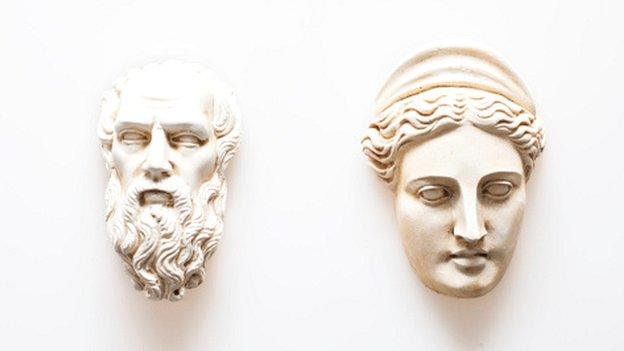Greece archaeologists uncover Amphipolis floor mosaic
- Published

A circular area near the middle of the mosaic is missing but archaeologists hope to rebuild it
Archaeologists unearthing a huge ancient burial site at Amphipolis in northern Greece have uncovered a large floor mosaic.
The mosaic - 3m (10ft) wide and 4.5m (15ft) long - depicts a man with a laurel wreath driving a chariot drawn by horses and led by the god Hermes.
The burial site is said to be the largest ever found in Greece.
It dates from the late 4th Century BC, spurring speculation that it is linked to Alexander the Great of Macedon.
Archaeologists started digging in August and think the magnificence of the tomb means it was built for someone very important.
Some observers say the tomb could belong to a member of Alexander's immediate family - maybe his mother, Olympias, or his wife, Roxana - or another Macedonian noble.
Others believe it could be a cenotaph, a monument built in honour of a person whose remains are elsewhere.
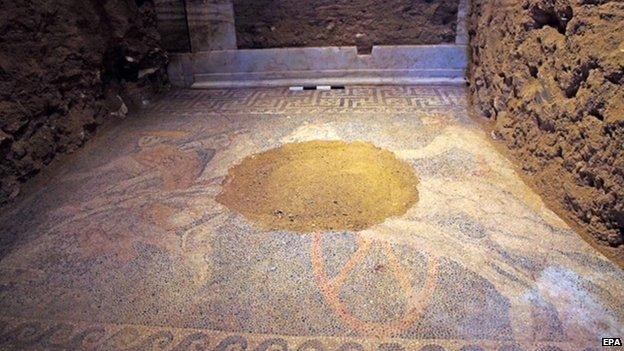
The mosaic is made of pebbles in many different colours
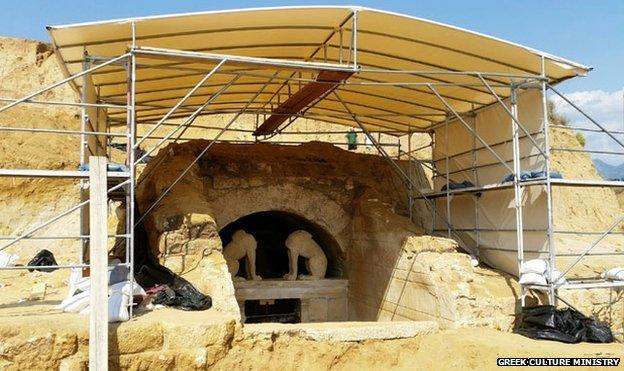
Two sphinxes guard the entrance to the tomb at Amphipolis
The discovery of the floor mosaic was announced by Greece's culture ministry on Sunday.
It says Hermes is depicted as the conductor of souls to the afterlife.
The image is made up of pebbles in white, black, blue, red, yellow and grey.

Amphipolis site
437 BC Founded by Athenians near gold and silver mines of Pangaion hills
357 BC Conquered by Philip II of Macedon, Alexander the Great's father
Under Alexander, served as major naval base, from which fleet sailed for Asia
1964 First official excavation began, led by Dimitris Lazaridis

A circular area near the middle is missing, but authorities say enough fragments have been found to reconstruct a large part.
Correspondents say the unearthing of the tomb at Amphipolis has enthused Greeks and has given rise to a wave of Greek pride and patriotism.
The mound is in ancient Amphipolis, a major city of the Macedonian kingdom, 100km (62 miles) east of Thessaloniki, Greece's second city.
The wall surrounding it is 500m (1,600ft) in circumference, dwarfing the burial site of Alexander's father, Philip II, in Vergina, west of Thessaloniki.


Born 356 BC in Pella, son of Philip of Macedon and Olympias, educated by Aristotle
Became king of ancient Greek kingdom of Macedon at age 20
Military victories in Persian territories of Asia Minor, Syria and Egypt - "great king" of Persia at 25
Founded 70 cities and empire as far east as the Indian Punjab
Died 323 BC of fever in Babylon

- Published22 September 2014
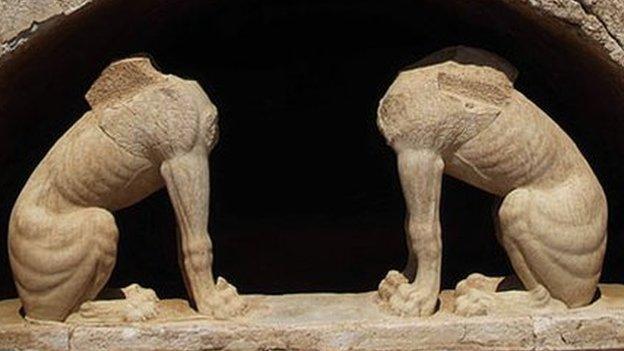
- Published12 August 2014
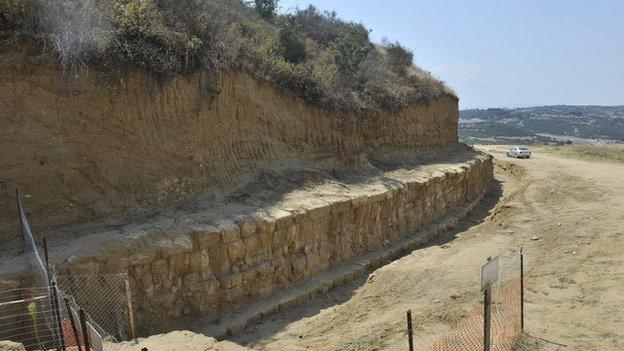
- Published15 July 2012
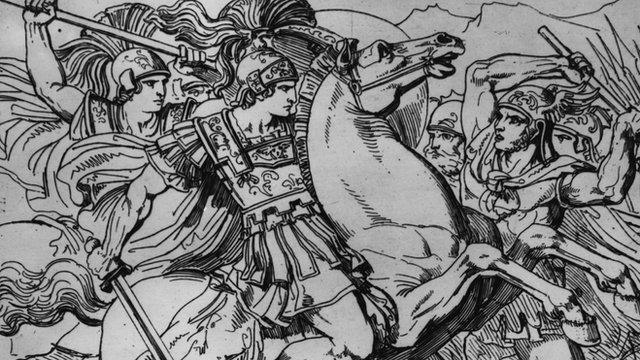
- Published23 July 2014
